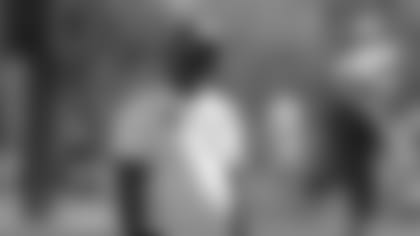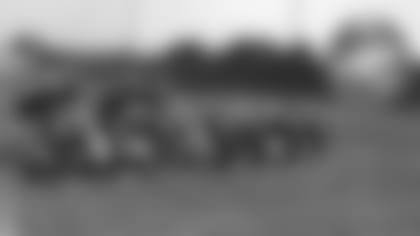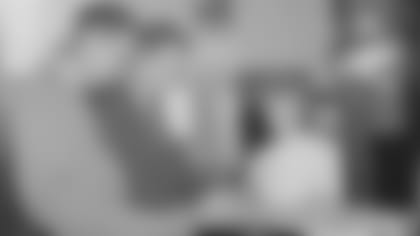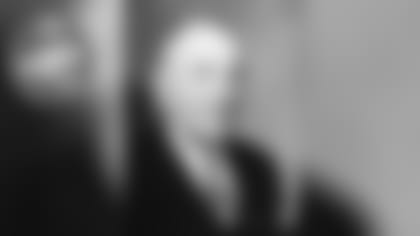| Name | Position | Years | Total Games |
|---|---|---|---|
| Bob Mann | E | 1950-54 | 38 |
| Charley Robinson | G | 1951 | 2 |
| Tom Johnson | DT | 1952 | 8 |
| Bill Robinson | HB | 1952 | 2 |
| Veryl Switzer | HB | 1954-55 | 24 |
| Charlie Brackins | QB | 1955 | 7 |
| Jack Spinks | G | 1955-56 | 7 |
| Nate Borden | DE | 1955-59 | 57 |
| Frank Purnell | FB | 1957 | 9 |
| Len Ford | DE | 1958 | 11 |
| Emlen Tunnell | DB | 1959 | 12 |
| Timmy Brown | HB | 1959 | 1 |
Note: Tunnell played two more years, 1960-61
As all history should be told and, in this case, with particular deference to Black History Month, here's an unvarnished timeline of what it was like for the Black Packers who served as trailblazers in the 1950s.
May 16, 1950 – The Milwaukee Journal reported that the Packers had signed halfback Jim Clark and guard Jim Thomas of Ohio State as undrafted free agents; and that they were the first two Black players ever signed by the team. The signings had secretly taken place a month earlier. The Journal also reported that new head coach Gene Ronzani was hoping to select two other Black players, halfback George Taliaferro and defensive end Len Ford, in the special draft of All-America Football Conference veterans. In all, Ronzani was hoping to carry as many as four or five Black players on his 1950 roster.
At the time, it was unknown that Walt Jean, a guard who played for the Packers from 1925-26, had a Black father and white mother. As a result, it was accepted as fact that Curly Lambeau never had a Black player in his nearly three decades as Packers coach.
May 20, 1950 – The Green Bay Press-Gazette published a letter in its "People's Forum" from a Green Bay resident who signed it with the initials H.D.C. The writer objected to the Packers' plans to integrate their roster, stating, "Personally, I much prefer Ronzani sign white players and certainly there are plenty available who will give Green Bay a winning team." The writer also noted, "I have no race prejudice…"
Sept. 6, 1950 – The Packers cut Clark and Thomas. When the regular season started 11 days later, there were no Black players on the team's roster.
Nov. 25, 1950 – The Packers signed 26-year-old end and Navy veteran Bob Mann. The next day, Mann played against the San Francisco 49ers in a home game at old City Stadium, becoming the first Black player (other than Jean) to play for the Packers in a regular-season game.
A year earlier, Mann played for Detroit and led the NFL in receiving yards while finishing second in receptions. However, he didn't report to camp on time when the Lions offered him a one-year salary of $6,000 before the 1950 season, a pay cut of $1,500. Traded to the New York Yanks, Mann was waived at the end of training camp and was a third-year street free agent when the Packers signed him. Two days after Mann's first game with the Packers, they headed to the West Coast by train for their final two games.
"My first memory of the locker room was that I think I came up there on a Saturday," Mann recalled in a 2001 interview. "I remember it being small and the guys were all sitting around on the little benches. I think the first guy to come over and talk to me was (Tony) Canadeo. It was a much smaller town than I was used to, but everybody was friendly."
Jan. 18, 1951 – The Packers chose George Rooks, a 6-foot-2, 220-pound fullback from Morgan State in the 11th round of the NFL Draft. He was the Packers' first draft pick from a historically Black college, although they had taken tackle Jason Bailey of West Virginia State in the All-America Football Conference draft in 1950. Bailey chose not to play.
Morgan State was 14-0-2 in Rooks' final two seasons, and he made the Pittsburgh Courier Black College All-America Team both years. Scouts and his coaches at Morgan State were labeling him another Marion Motley, the Cleveland Browns' 6-1, 238-pound battering fullback and future Pro Football Hall of Famer.
Rooks was reportedly timed at 10.3 seconds in the 100-yard dash and had been tagged with such nicknames as "Choo Choo," "Tank" and "Train." However, Rooks suffered an undisclosed leg injury before the first preseason game and was released after the third exhibition without getting much of a look.
"He kind of reminded me of (future Pro Football Hall of Famer) Tank Younger (of the Los Angeles Rams)," said Mann. "I don't know if he didn't have enough drive or what it was. But he was like 6-3, 235. I don't think he was as good an athlete as Tank Younger."
While Rooks didn't make the team, rookie guard Charley Robinson, another Pittsburgh Courier All-American from Morgan State, played in two late-season games and became the second Black player after Mann to appear in an NFL game with the Packers.
1951
With Mann about to start his first full season with the Packers, he couldn't find housing.
"He had a terrible time finding a place to live," Clare Martinkovic, wife of defensive end John Martinkovic, said in 2012. "I know he had a cottage some place. He was one of the nicest men. Everybody really liked Bobby."
Thanks to Harry Goeben, a Green Bay native who worked in Westinghouse Electric's local warehouse, Mann was able to rent one of his small cabins located behind Kroll's Restaurant in the then town of Preble. There were seven cabins in all, and they lined the west boundary of Kroll's back parking lot. Mann's cabin consisted of nothing more than a combination bedroom/living room and a bathroom. It was heated by a kerosene stove.
"We took the entertainers from the Piccadilly (a nearby bar)," Leonard Goeben, Harry's son, said in 2012. "They had Blacks (as performers). My mother and father both worked in San Diego at the aircraft plant during the war. You come in contact with all kinds of people … it didn't bother (my dad) to rent to whatever nationality. If people needed a place to stay, he was willing to do it."
On the road, Mann roomed with second-year guard Ray DiPierro, a product of Ohio State. The fallout from some teammates was hostile, at the least.
"There were a lot of white kids who had never been in a shower with a Black kid before," DiPierro said in 2001. "They didn't even want to shower with a Black kid. They had been so indoctrinated in the South. This was 1950. I had a lot of backlash. Guys called me, '(racial slur)-lover,' stuff like that. But I got along extremely well with Bob. I had grown up in the produce business and had dealt with a lot of Black people. Bob was a much better person than I was. He used to pray at night and let out his emotions. He was an extremely quality person.
"Most of the guys liked him. Like I said, Bob was a quality person. But there were a few, like Rebel Steiner – these were hard-a-- Southern boys. It was tough for them to get involved with a Black."
Halfback Billy Grimes was another teammate who welcomed Mann's presence. As did Rex Joslin, who ran the Surf Club, near what today is the UWGB campus.
"There were two or three maybe from the Deep South that weren't happy with him," Grimes said in 2000. "But after games, we used to go to a little place called the Surf Club. It was over by the bay, out past the (wildlife) sanctuary, along the road going up to Sturgeon Bay.
"Anyway, this fella (Joslin) would close it up Sunday nights after a game, and just let the players in or people we invited. It was just a small little bar with a jukebox. We'd get to dance. He'd fix us something to snack on. He was a big football fan. That way we could have a little privacy and not be out in the general public.
"We had Bob out there a number of times. He'd come over to my house. We'd sit out there by the bay and go swimming. My kids played with him and everything else. A fine gentleman."
Nov. 27, 1951 – A letter was posted in the Press-Gazette's People's Forum praising Mann for how he had handled himself, despite being a victim of occasional, if not frequent, cheap shots by opposing players. What's more, it wasn't the first time a fan wrote to the paper claiming Mann was being treated unfairly, even by the officials.
"Hats off to Bob Mann for his sportsmanlike conduct under circumstances that would try a saint," a letter signed G.M. read. "He has been battered and bruised but still keeps catching those passes. We owe him a vote of thanks."
Jan. 17, 1952 – The Packers took tackle Tom Johnson of Michigan in the sixth round of the NFL Draft, the only Black player among their 30 choices. Johnson was injured in the season opener and missed four games but became a solid contributor on defense late in the season. Drafted into the Army just before the start of training camp in 1953, Johnson missed two seasons and was waived when he returned in the summer of 1955.
During Johnson's absence in 1952, the Packers picked up halfback Bill Robinson, Pittsburgh's 25th-round draft pick that year. Robinson, who played collegiately at Lincoln University, a historically Black college near Oxford, Pa., had been cut by the Steelers late in training camp. Robinson played two games with the Packers and, according to the Press-Gazette, "thanked coach Ronzani for the opportunity," when he was released and said he planned to enter the Army.
Oct. 30, 1953 – Mann also had another white roommate during his time with the Packers: Dick Afflis, a barrel-chested, 6-foot tackle, who played from 1951-54 and then became far more famous in his second career as a pro wrestler under the name "Dick The Bruiser." On the Packers' first-ever trip to Baltimore to play the Colts in a Saturday night game, they stayed at the Lord Baltimore Hotel and held a team meeting there on Friday night.
"I had to stay at another hotel, a Black hotel," said Mann. "I couldn't stay with the team. After the meeting, I had to go back to my hotel. Dick Afflis walked out with me and he called for a cab. So the cab pulls up to the curb and when the driver finds out that 'Dick The Bruiser,' or Dick Afflis, wasn't going to get in the cab, he told Dick he couldn't take me.
"So 'The Bruiser' reached in and snatched him out of the window and said he better take me. He pulled his whole body out the window. The cabbie said, 'I'll take him.' Dick was a character. Enjoyed violence. A good athlete. He weighed about 265 and could do push-ups doing a handstand."
1950-58
Bobby Harrill, a native of tiny Spindale, N.C., who served as a gunner's mate first class under General George Patton in World War II, was another bar owner who put out the welcome mat for Packers, including the few Black players in the 1950s. Harrill moved to Green Bay after the war and opened the Piccadilly, arguably the most popular and busiest night spot in the city at the time, at least before Vince Lombardi arrived in town in 1959 and put it off limits to his players.
"They all came out there," Harrill said in 2011. "I was the only place in town, really, with entertainment and dancing. I had a lot of girls coming out there. If you have girls hanging out, you're going to have business. A lot of the colored guys hung out by me because I had colored bands out of Chicago and other places. Traveling bands.
"Green Bay was very prejudice. I couldn't even get those colored bands a place to stay. None of the hotels would take them, none of the motels. I finally had to buy a house for them to stay in so they could play in my club. Then all the neighbors started complaining and went to the town chairman. Some of (those Black players) didn't even drink. I never had any trouble with any of them. I know girls danced with the Black guys. Hell, that's just normal. That was never an issue."
Next Thursday: Part II














